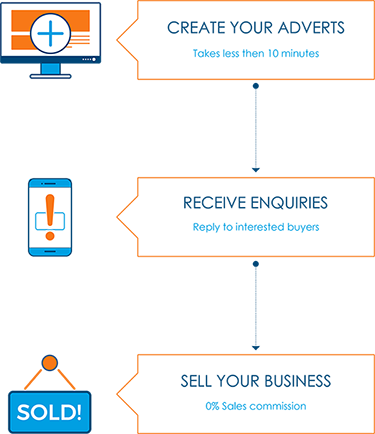Are You a Sole Trader Selling A Business? Don’t Forget To Declare Your Capital Gains…

When selling a business as a sole trader, you’ll need to pay tax on any profit made from the sale. This is what ‘capital gains’ refers to: the monetary value gained from selling or transferring business assets to someone else.
As such, you’ll have to declare these earnings in your Self Assessment, so HMRC can calculate your tax liabilities. How much Capital Gains Tax you pay can vary, according to our friends at SimpleTax, so read on for a closer look at what to expect when selling your business.
What is Capital Gains Tax?
Capital Gains Tax may be payable on any gain made from the sale of your business. In its basic form, CGT is paid on the difference between the initial cost of the business assets and the sale proceeds, i.e the added cash you’ve made.
Assets of the business could include the building (if you own your premises), equipment, stock and company vehicles, to name a few…
When do you pay tax on Capital Gains?
All individuals have an annual Capital Gains Tax exemption of £11,300 (2017/18 tax year). This means that the first £11,300 of any gain is tax free.
If your gain is greater than the exemption then there are currently two standard Capital Gains Tax rates – 10% for basic taxpayers (those earning less than £45,000 per annum), and 20% for everyone else. So, typically, you’ll be liable for 10% or 20% of any gains made over £11,300, depending on your income for the year.
However, the good news is that there is a special tax relief available for the sale of a business. This is known as Entrepreneurs Relief and reduces the tax due on any gain to 10%, regardless of your total earnings.
It’s available if you meet one or several of these criteria:
- You have at least a 5% stake
- You’ve owned the business for at least one year before selling it
- You’re classed as a sole trader (although relief is also available for partnerships and limited companies)
Whilst other reliefs are available, Entrepreneurs Relief can be the most generous. Please note that there is a limit – you can’t claim more than £10 million of it in your lifetime.
How to calculate and assess
Look back over your records to find out how much you paid to set up or purchase the business. Then it’s a matter of deducting that value from the value of the sale. The resulting figure is applicable for CGT (providing it’s over the £11,300 threshold).
For example, a sole trader buys a catering van and equipment for £15,000 in 2010. They receive an offer to buy the business (including its assets) for £40,000 in 2017, and agree to sell. The capital gains on this would be:
- Sale proceeds: £40,000
- Initial cost of business: £15,000
- Gain: £25,000 (£40,000 – £15,000)
- Annual exemption: £11,300
- Taxable gain £13,700 (£25,000 – £11,300)
- Tax due on 10% of gain: £1,370
Calculating this can be easy. By taking advantage of modern software, such as SimpleTax, you can automatically crunch the numbers, determining your profit and tax liabilities. Our software contains the capital gains form (SA108), so you can complete this online and submit directly to HMRC in a matter of minutes. It’s that simple.
With so much to think about during a big capital gains sale, don’t let tax concerns put pressure on your decision. Invest in the best tax software for your business, and simplify your CGT submission today.
Searching for businesses for sale? Search thousands on Daltonsbusiness now >>


